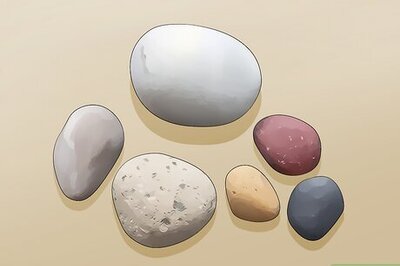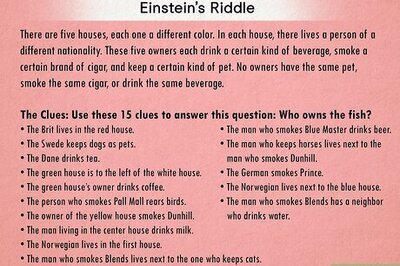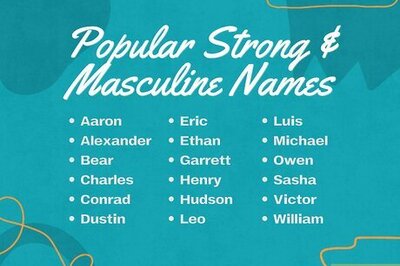
views
DENVER: Colorado lifted some fishing restrictions along a stretch of the Colorado River on Tuesday, but biologists warn that historically low water flows caused by a drought in the U.S. West, high water temperatures and wildfire sediment that all starve trout of oxygen could force future bans.
On July 7, Colorado Parks and Wildlife imposed a rare 120-mile (193-kilometer) voluntary fishing ban. Tuesday’s changes allow anglers a key driver of Colorados summer tourist economy to fish a 27-mile (43-kilometer) stretch of river anytime between midnight and noon, when waters are cooler. Restrictions also have been partially lifted for 50 miles (80 kilometers) upstream.
The changes came after upriver reservoir releases, recent rain and a smaller amount of cold Colorado River headwaters being diverted to the Denver metro area on the eastern side of the Continental Divide, said Kendall Bakich, a Parks and Wildlife aquatic biologist.
Days of smoke from wildfires burning in Western states also has deflected solar radiation that heats up the river, slightly lowering temperatures, Bakich said.
Its crazy, but every little bit helps, she said. There have been such low flows beginning this spring that the Colorado River looks more like a creek than a river.
A multitude of factors, nearly all tied to climate change, have left fish in the Colorado River and its many tributaries in a precarious state. Climate change has made the American West much warmer and drier in the past 30 years. While cold-water trout thrive in temperatures below 65 degrees Fahrenheit (18 Celsius), biologists have recorded temperatures surpassing 75 F (24 C).
Colorados Western Slope also experienced minimal spring runoff from the high Rocky Mountain snowpack this year runoff that usually flushes out the river and replenishes high-quality habitat for fish, Bakich said.
The other phenomenon weve never seen is the heating upstream of tributaries of the Colorado River, she added.
In recent weeks, sediment has been shoved into the waterway by microbursts of rain. That’s particularly the case in Glenwood Canyon, much of which was charred by the 640-square-mile (1,657-square-kilometer) Grizzly Creek Fire last year. Debris lowers oxygen levels in the water and scars the gills of trout, Bakich said.
Affected species include the brown and rainbow trout, mountain whitefish and sculpins that are a food source for the larger fish.
For years, numerous environmental groups have protested the diversion of water to the Denver area, arguing it is harmful to the drought-stricken Colorado River.
Denver Water, the largest state water agency, taps some of that water to serve 1.5 million residents, about a quarter of Colorados population. It, too, is seeking ways to meet demand while conserving water amid the drought.
Officials have yet to implement mandatory fishing closures in large part because of a responsible local angling community, Bakich said.
Our anglers are pretty savvy. They know when conditions are good and not good. The challenge is with people coming from outside the region, she said.
The voluntary closure earlier this month was running from the town of Kremmling in north-central Colorado to the city of Rifle in the western part of the state. Now, anglers can fish between midnight and noon from State Bridge on the upper Colorado River to Red Dirt Creek west of Glenwood Springs.
Disclaimer: This post has been auto-published from an agency feed without any modifications to the text and has not been reviewed by an editor
Read all the Latest News, Breaking News and Coronavirus News here.




















Comments
0 comment